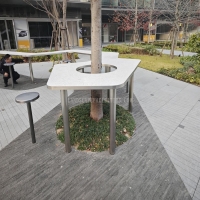Welcome to the website for landscape facilities products and knowledge.
How does the bin’s design ensure it doesn’t become a visual distraction?
In today’s design-conscious world, bins are no longer mere functional objects but carefully crafted elements that blend into their surroundings. The key to avoiding visual distraction lies in three core principles: minimalist aesthetics, strategic placement, and adaptive materials.
First, modern bins employ sleek, geometric shapes and neutral colors—matte black, muted gray, or earthy tones—that harmonize with interior or urban landscapes. Unlike brightly colored plastic counterparts, these designs avoid drawing attention while maintaining accessibility.
Second, innovative placement solutions embed bins into architecture: recessed wall slots in offices, under-counter compartments in kitchens, or camouflaged outdoor enclosures. Some models even utilize reflective surfaces that mirror their environment, effectively "disappearing" when not in use.
Third, material selection plays a crucial role. Textured metals or perforated patterns break up visual mass, while translucent polycarbonate bins in workspaces create a ghosted effect. Motion-activated lids eliminate protruding flaps that disrupt sightlines.
The most advanced designs incorporate contextual awareness. A park bin might mimic surrounding foliage patterns, while an art gallery’s waste receptacle could emulate plinth styling. This psychological approach ensures the brain categorizes them as background elements rather than focal points.
By prioritizing visual coherence over overt functionality, contemporary bin design proves that even mundane objects can achieve invisibility through intentional craftsmanship. The result? Cleaner spaces where waste disposal exists without imposing on our visual field.
Related search:

Recommendation
An outdoor bar counter with stainless steel and terrazzo materials in an irregular shape